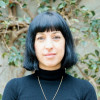
Victoria Castillo — Mother of a young man with arthrogryposis

Arthrogryposis is not a specific disease, but a group of disorders with diverse symptoms, all of which ultimately impact the joints and muscles in the body. A diagnosis of arthrogryposis is given when an individual is born with two or more stiff or immobile joints. Since it affects the musculoskeletal system, all types of arthrogryposis result in varying degrees of disability. Those affected by it must receive physiotherapy and other treatments throughout their lives to effectively manage the symptoms of the condition.

Pablo, Victoria's son, was born with clubfeet, a dislocated hip, and knee joint issues. Three months after he was born, a nurse at the Sant Joan de Déu Barcelona Children's Hospital informed them that it was arthrogryposis since the doctors who were treating him had not been able to provide a diagnosis, and the family decided to seek a second opinion. In 2019, Victoria accepted the position of delegate in Catalonia for the AMC-Arthrogryposis Multiplex Congenita Spanish Association and became deeply involved in promoting research into the condition.
To kickstart research on a rare disease, the initial essential step is to compile information about the condition. This includes data on the number of individuals affected, the prevalence of different subtypes, the range of symptoms exhibited, and the disease's progression over time. Essentially, a robust database is required to collect and categorise information from as many patients as possible. This database will serve as the cornerstone upon which researchers can build projects tailored to meet the specific needs of the patients. This is precisely what the AMC Association accomplished.

Victoria took part in the fourth episode of the podcast La Ciencia de lo Singular, where we delved into the importance of registries in the study of rare diseases. She elaborated on how the idea to establish the arthrogryposis registry originated:
"When I joined the association, we contacted with the Neuromuscular Pathology Unit at Sant Joan de Déu Children's Hospital. Simultaneously, we reached out to a therapist and researcher at Shriners Hospital in Montreal who had published an article about a pilot pediatric registry for arthrogryposis. It was at that point that the concept of creating an international registry started to take shape."
The Canadian researcher opened the doors to patients, caregivers, and associations to kickstart the registry, and she also engaged researchers and healthcare professionals. This is where, as Victoria explains, the idea of an international arthrogryposis registry began to take shape: "At that point, we involved the doctors from Sant Joan de Déu, specifically Dr. Daniel Natera. Now, we are defining what are known as Core Data Elements, the key points or questions that will be included in this registry, marking the first step towards an international registry."
Victoria emphasises the importance of involving patients in rare disease research. She states, "More and more patients and associations are actively taking part in research, and our influence is growing. Our own experience illustrates this beautifully: it's us, the patients and associations, who have pushed forward with this project. Of course, it wouldn't have been achievable without the invaluable help from some wonderful doctors and researchers who selflessly joined our cause."
Victoria, along with the entire team, remains dedicated to enhancing our comprehension of arthrogryposis, with the ultimate goal of making a positive difference in the lives of those who are affected. At present, they are in the process of creating a national clinical registry for individuals with congenital multiple arthrogryposis in Spain. The intention is to eventually integrate all the data from this national registry into the international registry.
